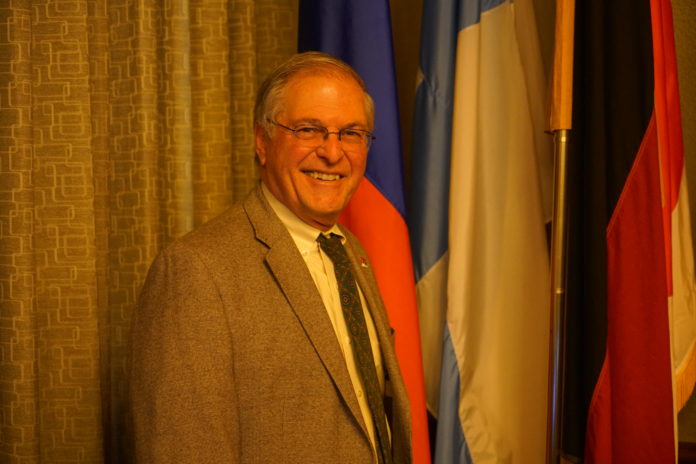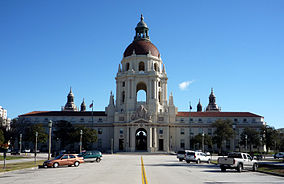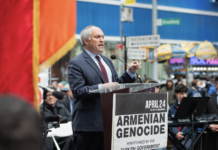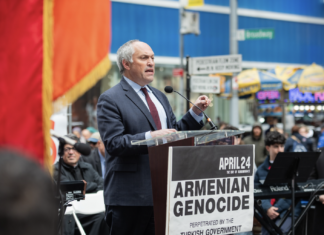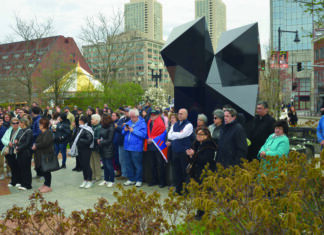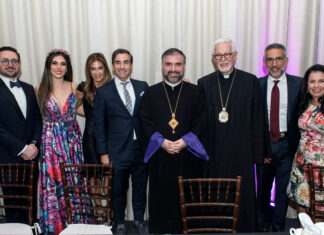PASADENA, Calif. – Pasadena has a substantial Armenian population, though not nearly as large as that of neighboring Glendale. Mayor Terry Eliot Tornek noted that both individual Armenians as well as Armenian organizations are very active in the life of the city. Armenians, he said, “are very well represented in commissions and organizations,” and have a significant impact in terms of the welfare of the city.
Tornek, born in New York City in 1945, graduated Princeton University, and obtained a master’s degree from Columbia University in urban planning. He worked as an urban renewal representative in New York City with the US Department of Housing and Urban Development from 1968 to 1969, but moved to Massachusetts in the 1970s. He worked as Planning Director of Springfield, Mass., and served as a member of the Springfield City Council. In 1982 he moved to Pasadena to become the city’s Planning Director and helped establish the redevelopment plan for Old Pasadena.
Tornek has worked for over three decades in real estate, and is a founding partner of Hudson Properties, LLC. Before this, he served for over a decade as Executive Vice President at HASEKO, Inc. While working in business, he served twenty years as a board member of the nonprofit Pasadena Neighborhood Housing Services, and in 2005 was appointed to the Pasadena Planning Commission. He also served on the Design Commission.
He reentered politics with his election to City Council to represent District 7 in 2009, was reelected in 2013, and was elected mayor in 2015. In Pasadena, mayoral elections are direct now for four-year terms, with seven city council members serving along with the mayor. Tornek at the same time serves as chairman of the Pasadena Finance Committee, a member of the Municipal Services and Legislative Policy Committees, the City Council appointee to the Fire and Police Retirement Board, Pasadena’s representative to the San Gabriel Valley Council of Governments, and is president of the Burbank Airport Authority.
Tornek said, “My focus has been on the financial well-being of the city. I am a business person and a city planner by training.” He said that he appointed himself chairman of the Finance Committee. “I have been very concerned about expenses outstripping revenues, which is why I suggested we increase the sales tax as in Glendale and Burbank. It passed here by a wider margin. We are giving a third to the school district. I felt we had to do this to maintain the level of services that we have and take care of some of the deferred infrastructure issues that we have,” he said. He declared that 14 million dollars will be raised for the city and 7 million for the school district.
Aside from working on affordable housing, Tornek said that he is very much interested in the future of the Arroyo Seco Park, the biggest park in Pasadena, and so has begun an initiative relating to its improvement.



